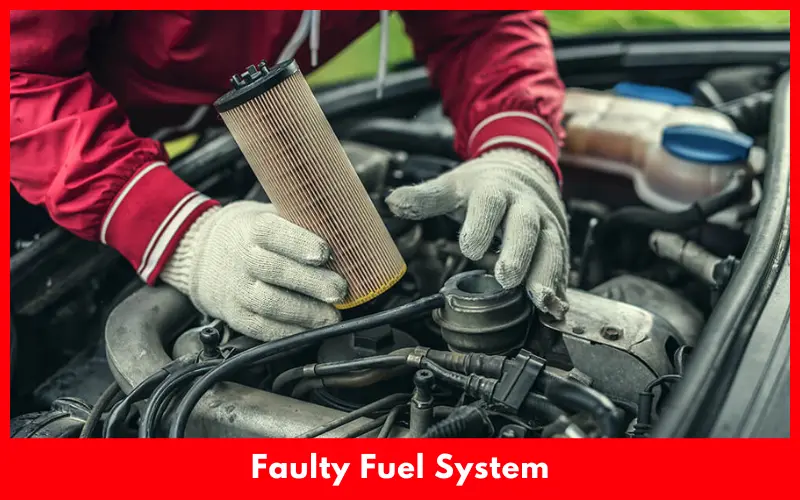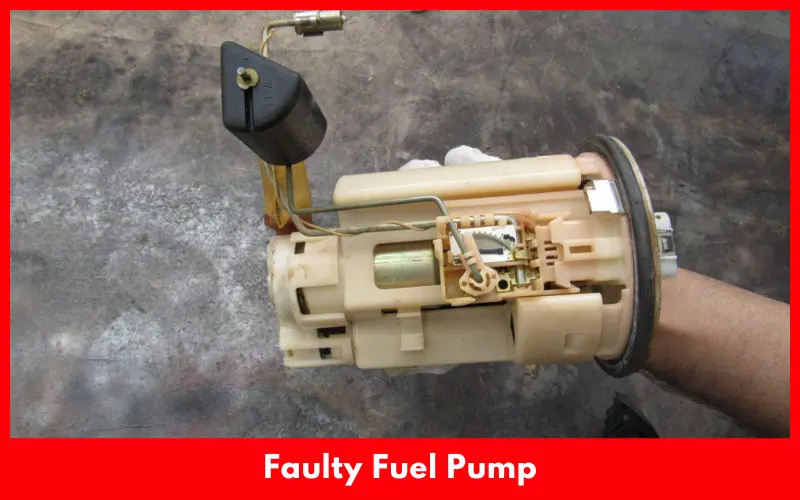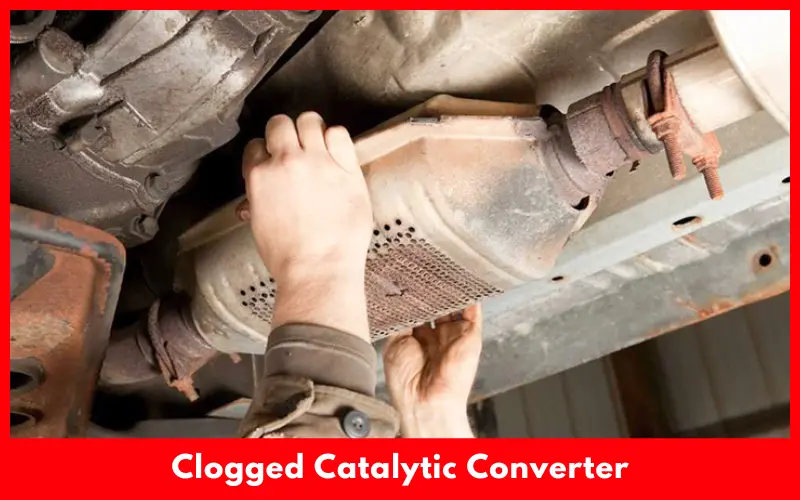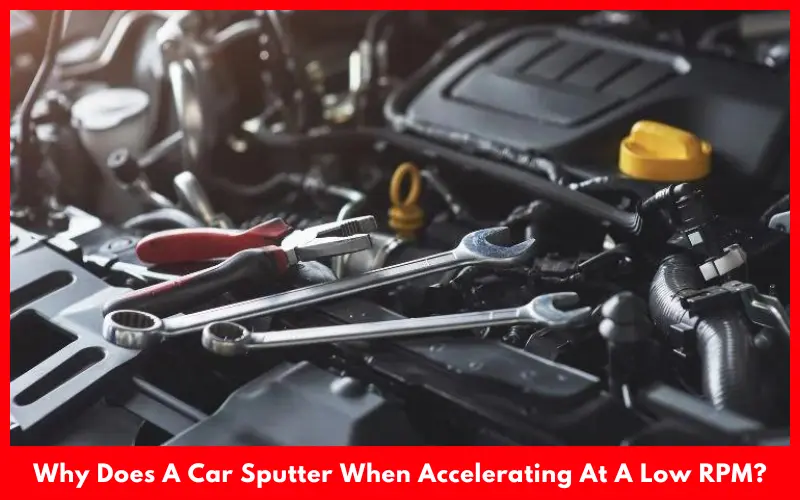If your car idles fine but sputters when accelerating hard or slowly at low or high RPM, it can be due to lack of fuel, lean air-fuel mixture, or a faulty fuel system. Damaged catalytic converter, bad O2 sensor, or faulty MAF sensor can also cause engine sputtering problems.
If you continue driving with a sputtering engine, it can cause engine stall and prevent engine from starting next time. To fix this problem, you may need to repair or replace, an air or fuel filter, fuel pump, float bowl and clean or fix catalytic converter.
Article Summary
Why Do Car Idles Fine But Sputters When Accelerating?
If your car sputters for a few seconds when accelerating, it can be a result of a faulty fuel system. But if car sputters continuously under load, ignition system may get damaged. On a car with an old carburetor engine, throttle tends to make a lean mixture at low RPM.
When the throttle opens suddenly, mixture becomes leaner as heavy fuel takes some time to get velocity to pass through jets. Splutter may disappear when car revs pick up and carburetor returns to balance. It isn’t a problem for fuel-injected vehicles.
But when you accelerate, combustion pressure reaches higher under high load and prevents a spark from passing through it easily. Spark may also hit and miss due to a substandard ignition system and trigger spluttering.
Causes of Car Sputters When Accelerating
If your car sputters when accelerating after turning on, inspect these components and follow the mentioned techniques to solve the problem:
1. Faulty Fuel System
If your car idles fine but sputters when accelerating, an imbalanced fuel-air mixture can be responsible. Check fuel pressure sensor, filter and air filter for dirt and debris and change the faulty part to solve the problem.

If your car has a carburetor engine, an air leak in fuel flow or intake system can also cause this issue. To determine, disconnect fuel feed pipe from fuel filter and ask someone to run engine for a while and you obverse the fuel flow. If you notice an imbalance in fuel flow, replace the filter or pipe.
2. Bad MAF Sensor
With a fuel injection engine, it can sputter during acceleration due to a mass air flow meter. if there are rips or cracks on air intake hose, mass air flow sensor won’t be able to count the right amount of air entering the engine. Its hot wire sensing element will measure incorrect amount of air and send wrong analog voltage signal to PCM.

The PCM will calculate incorrect fuel injector pulse width to deliver required air-fuel ratio. It can cause severe performance problems including engine sputter when accelerating. A faulty MAF sensor will also trigger a check engine light, reduced engine power, lean condition, and some drivability issues. This sputtering may go away after engine reaches 6000 RPM.
3. Dirty Float Bowl
If your vehicle starts and idles fine but sputters and car stalls after getting gas or accelerating, check float bowl. The float bowl can get clogged due to a small cache of debris, dust, and dirt cause this issue. If so, remove the carb and clean out the float bowl.
Remove main jet and another jet from carb top and blow them out. This should solve the sputtering problem by ensuring proper airflow.
4. Faulty Fuel Pump
Fuel pumps drive fuel from gas tank to engine to power a vehicle. But fuel pump goes bad due to overheating, contamination, and wear, and won’t deliver enough fuel to engine. So engine can cause sputters when accelerating after starting normally. To verify, check fuel pressure with engine running and inspect pressure when you give it gas.

If you notice a pressure drop, either the fuel pump or fuel pressure regulator gets damaged. If fuel pump is bad, fuel pressure relay will become hot and turn on and off due to heat. If fuel pressure regular is getting damaged, there might be power on it. If it doesn’t have power, check ohms in the wiring with engine off. You’ll need to replace wiring if multimeter reads OL during checking.
5. Clogged Catalytic Converter
If your car is idle fine but starts shaking and sputtering when accelerating and loses power, check catalytic converter. A clogged catalytic converter can cause gas to return to exhaust system and prevent fresh combustion from generating. It can cause an engine to sputter when accelerating and may end with an engine stall.

Catalytic converters can go bad or clog due to a worn injector or spark plug, coolant leak into exhaust, or won’t engine. To verify, remove, and replace oxygen sensor with a back pressure gauge. Start your car and note pressure gauge’s reading. While 0 to 3 PSI readings mean normal, around 8PSI indicates a clogged catalytic converter.
To solve this issue, fix catalytic converter cleaner into gas tank when it is ¼ full. Then drive your vehicle for around 15 minutes and fill the tank to make it completely clear. If there are large clogs, clean the converter by spraying it using a pressure washer at the lowest setting.
Why Do Car Sputters When Accelerating With No Check Engine Light?
If your car sputters when accelerating but no check engine light, it can be due to a fuel problem. Fuel filters possibly tend to get damaged and cause engine sputter. If you continue driving, fuel filter may fail and trigger a check engine light. A faulty fuel pressure gauge, bad catalytic converter, or damaged coil can also cause this issue.
So bring your car to a mechanic shop to physically check those pats and fix the issue before they finally fail. However, you may have to check engine like next time you start the car. If yes, run scanner tool to get code from computer and solve the problem accordingly.
Why Does Car Sputter When Accelerating At A Low RPM?
Car can sputter when accelerating particularly at a low RPM due to a bad fuel filter. A clogged fuel filter doesn’t allow enough gas to flow at lower RPM which can trigger sputtering issues. Dirty air filters can also restrict airflow and cause sputtering problems. You’ll need to replace the faulty air filter or fuel filter to solve this issue.

If engine doesn’t deliver enough low-end torque to rotate driving wheels, it can also bring a sputtering problem when accelerating at low RPM. All engines have unique torque that ranges from 1500 to 4000 RPM. If you apply lots of throttle at lower RPM, engine can struggle and sputter due to overload.
FAQs
Why Does My Car Sputter When I Give it Gas?
MAF sensors may cause engine sputtering issues if too much or too little fuel passes through the engine. Worn out spark plug or dirty MAF sensor can also overheat the engine which can end up causing a sputter problem.
Why Does My Engine Sputter Under Hard Acceleration?
Engine can sputter under hard acceleration due to insufficient fuel in the tank. Faulty catalytic converter, dirty fuel injector, or damaged fuel pump can also cause engine juddering or sputtering problems.
Can I Drive On A Sputtering Engine?
Car engine sputtering is a serious safety concern and causes your car to stall suddenly. It can cause an accident or you need to tow the vehicle to a repair shop. Engine sputtering can make it inefficient to drive the car as it’s related to the exhaust, catalytic converter, and fuel system.
Final Words
If your car idles fine but sputters when accelerating, stop driving it and check fuel level. If gas tank has enough fuel, run OBD II to get the exact source of sputtering issue. Then carefully drive the car to an auto repair shop, inform mechanic, and fix the issue even if it costs around $100 to $1000. But don’t continue to drive with a sputtering engine particularly if you don’t want expensive repair or injure yourself.

